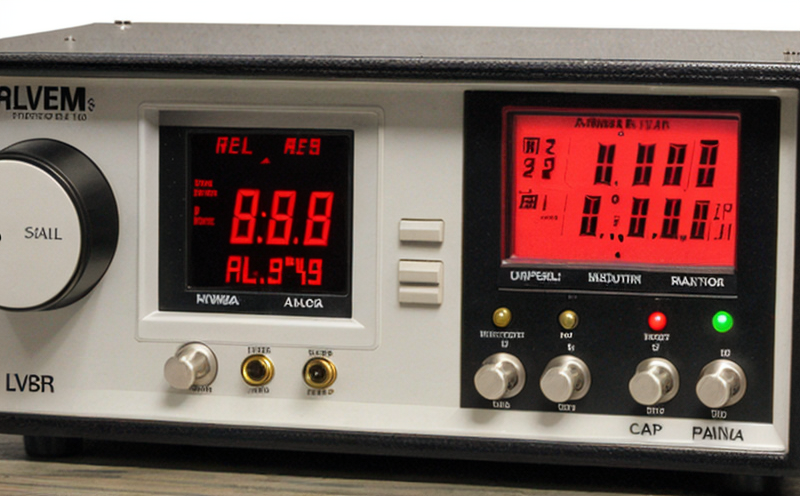ASTM E668 Calibration of Personal Radiation Dosimeters
The calibration of personal radiation dosimeters according to ASTM E668 is a critical process that ensures accurate measurement and reporting of occupational exposure to ionizing radiation. This standard is widely recognized for its stringent requirements, ensuring the reliability and accuracy of dosimeter readings across various industries. The primary purpose of this service is to provide laboratories with the capability to calibrate personal radiation dosimeters using ASTM E668 methods, thereby supporting regulatory compliance and enhancing safety standards.
The process involves several key steps that are meticulously adhered to in order to achieve accurate calibration. First, the dosimeter is exposed to a known level of ionizing radiation according to specified criteria outlined in ASTM E668. This ensures that the device can be accurately compared against this standard source, thus providing a reliable reference point for subsequent readings.
The next step involves measuring the response of the dosimeter using calibrated measurement instruments capable of detecting and quantifying low levels of ionizing radiation. The accuracy of these measurements is paramount to the overall calibration process. Once the initial exposure has been recorded, the dosimeter must be returned to its operational environment where it can continue to monitor actual occupational exposures.
Achieving accurate calibration also requires a thorough understanding of the dosimeter’s response characteristics under different environmental conditions. This includes factors such as temperature, humidity, and altitude, which can significantly affect the accuracy of readings. Laboratories like Eurolab are equipped with state-of-the-art facilities that allow for precise control over these variables during calibration procedures.
ASTM E668 calibration ensures compliance with international standards and provides confidence in the reliability of dosimeter measurements. This is particularly important given the potential health risks associated with ionizing radiation exposure, especially in high-risk environments such as nuclear power plants, healthcare facilities, and industrial settings where workers may be exposed to elevated levels.
Accurate calibration enhances safety by ensuring that personnel are not overexposed to harmful radiation, which can lead to increased risk of cancer and other serious health conditions. By adhering strictly to ASTM E668 guidelines, laboratories such as Eurolab contribute significantly to maintaining worker safety and regulatory compliance across multiple sectors.
The process also involves rigorous quality control measures at every stage, from initial exposure setup through final verification checks. These stringent protocols ensure that each calibration is performed consistently and accurately, thereby upholding the integrity of dosimeter readings.
- Occupational Safety and Health Administration (OSHA)
- Nuclear Regulatory Commission (NRC)
- International Atomic Energy Agency (IAEA)
In conclusion, ASTM E668 calibration is a vital service for ensuring the accuracy and reliability of personal radiation dosimeters. By adhering to this rigorous standard, laboratories like Eurolab play a crucial role in enhancing safety standards and supporting regulatory compliance across various sectors.
Industry Applications
- Nuclear Power Plants: Ensuring accurate radiation monitoring in highly regulated environments.
- Healthcare Facilities: Providing reliable dosimeter readings for personnel handling radioactive materials.
- Research Laboratories: Supporting accurate data collection in experimental settings involving ionizing radiation.
- Industrial Settings: Monitoring workers exposed to occupational hazards such as welding or metalworking.
In these industries, the accuracy of personal radiation dosimeters is paramount. ASTM E668 calibration ensures that these devices provide reliable and consistent readings, thereby enhancing safety protocols and regulatory compliance.
Eurolab Advantages
At Eurolab, we pride ourselves on offering unmatched expertise in the field of radiation detection instruments and calibration. Our state-of-the-art facilities are equipped with the latest technology to ensure accurate and reliable calibration services according to ASTM E668.
We employ highly qualified technicians who are trained specifically for this purpose, ensuring that every step of the calibration process is executed with precision. This dedication to quality control ensures that our clients receive the highest standard of service.
Our commitment extends beyond just providing accurate calibrations; we also offer comprehensive support and guidance throughout the entire process. Whether you have questions about the calibration procedure or need assistance interpreting results, our team is here to help.
Customer Impact and Satisfaction
Our clients benefit from improved occupational safety due to accurate dosimeter readings provided by ASTM E668 calibrated devices. This enhances regulatory compliance while reducing the risk of health hazards associated with ionizing radiation exposure.
Customers also appreciate our commitment to excellence, which is reflected in high levels of customer satisfaction. We consistently receive positive feedback from clients who value our expertise and reliability in this critical area.





